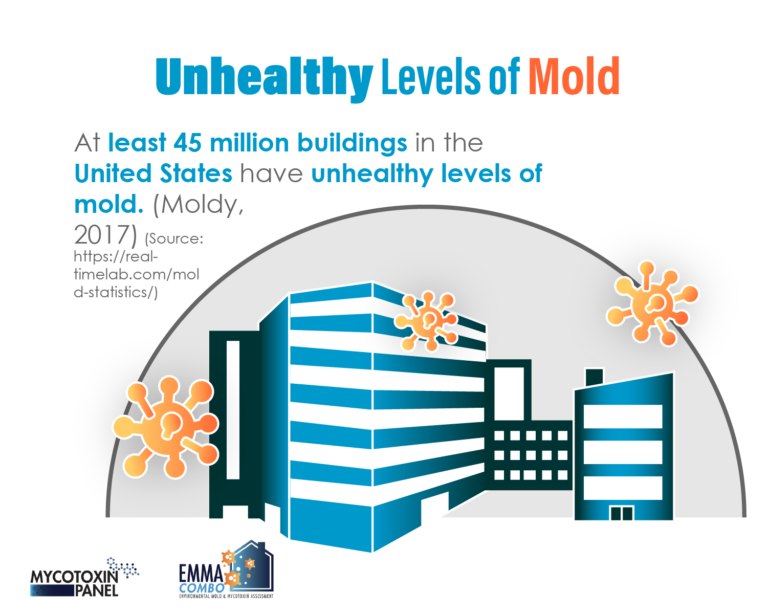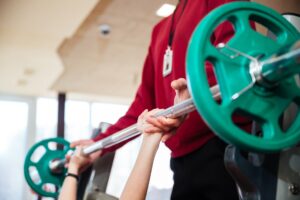Mold toxicity is a silent disruptor of health that often goes undiagnosed or misattributed to other common ailments. From sinus infections and skin rashes to anxiety and unexplained cravings, mold exposure can manifest in diverse ways. Many people live or work in environments where mold is present without even realizing the toll it takes on their health.
Lab testing increasingly reveals toxic mold exposure in individuals suffering from chronic symptoms such as:
- Joint stiffness and inflammation
- Brain fog and memory issues
- Recurring sinus infections, wheezing, or coughing
- Digestive problems like bloating, gas, or irregular bowel habits
- Mood disturbances such as depression, anxiety, and irritability
- Unexplained skin issues including eczema, hives, and itching
- Frequent urination, which can easily be mistaken for blood sugar issues
Alarmingly, mold doesn’t just disrupt your gut or lungs—it can also raise your blood sugar and lead to food cravings. This is due to the overgrowth of yeast and other microbial imbalances mold creates in your body.
The Data Behind the Mold Epidemic
Mold is more common than many people think. According to the EPA and Berkeley National Laboratory, roughly 4.6 million asthma cases in the U.S. are linked to dampness and mold exposure in homes. An estimated 45 million buildings in the U.S. may have unhealthy levels of mold. These are not minor stats—they point to a public health concern affecting millions.

How to Safely Detox from Mold
Before any detox protocol, the source of mold exposure must be eliminated. That could be your home, office, vehicle—or even something mobile like a Sprinter van. Without first removing yourself from the contaminated environment, detox efforts are unlikely to succeed.
Contrary to common belief, bleach is not a safe or effective mold removal method. It can actually worsen the problem by causing spores to become airborne. Instead, a mixture of hydrogen peroxide and vinegar is recommended for cleaning small areas.
Once the environment is handled, the detox process can begin. Depending on the type of mold, this may include protocols using ingredients like wormwood and candida-specific herbs. Because symptoms and mold types vary, a custom strategy is usually necessary. Holistic experts tailor detox plans based on lab results and client symptoms to ensure safety and effectiveness.
Why Diet Matters More Than Ever
A mold detox won’t work without cleaning up your diet. This includes eliminating processed sugars, gluten, and dairy—key offenders that feed mold and yeast in the body. Switching from a standard American diet to whole, nutrient-rich foods is a critical step toward recovery.
Even if you don’t suspect mold toxicity, these dietary changes can help improve digestion, support immunity, and restore balance in the gut. For anyone struggling with cravings or gut issues, exploring mold and yeast overgrowth as a root cause is a smart move.
Parasites and Mold: A Hidden Connection
Another important point: mold toxicity and parasitic infections often go hand-in-hand. If you’re addressing mold, it’s wise to also explore parasite cleansing with a knowledgeable practitioner.
If you’re based in Nevada or want expert virtual guidance, consider working with The Gut Girl. She offers personalized protocols and has experience navigating mold-related health concerns. Her consultations are available both locally and remotely.
Take Control of Your Environment and Health
Don’t ignore unexplained symptoms. Whether it’s persistent brain fog, weird skin rashes, or chronic sinus congestion—consider the role mold might be playing. Removing the source and starting a detox can bring surprising relief. Your body has the capacity to heal when you give it the right support and eliminate the hidden culprits holding you back.
Video Summary
To learn more about nutrition, fitness, and health from professionals and experts, visit our channel and subscribe: https://www.youtube.com/@Vitality-and-Wellness



